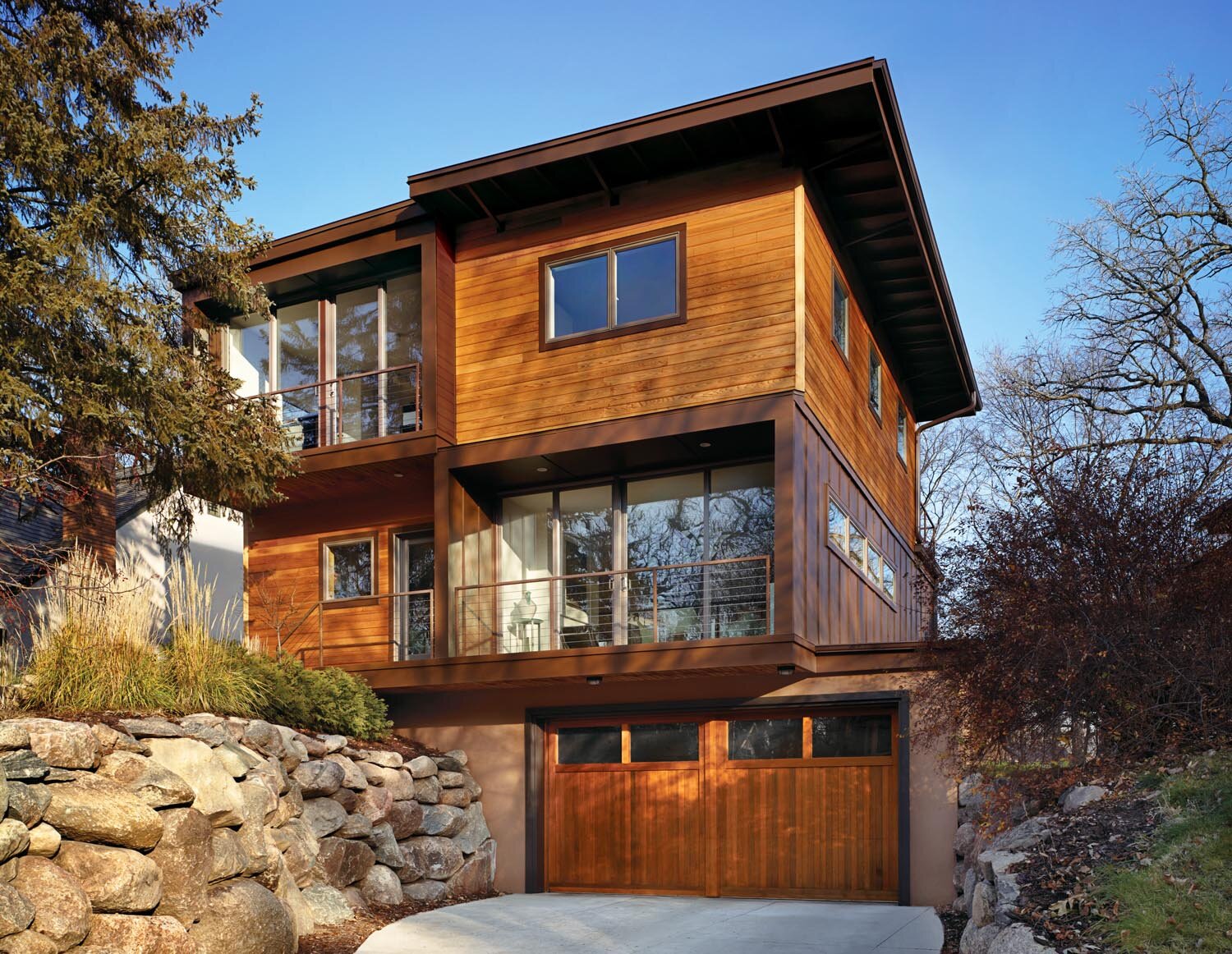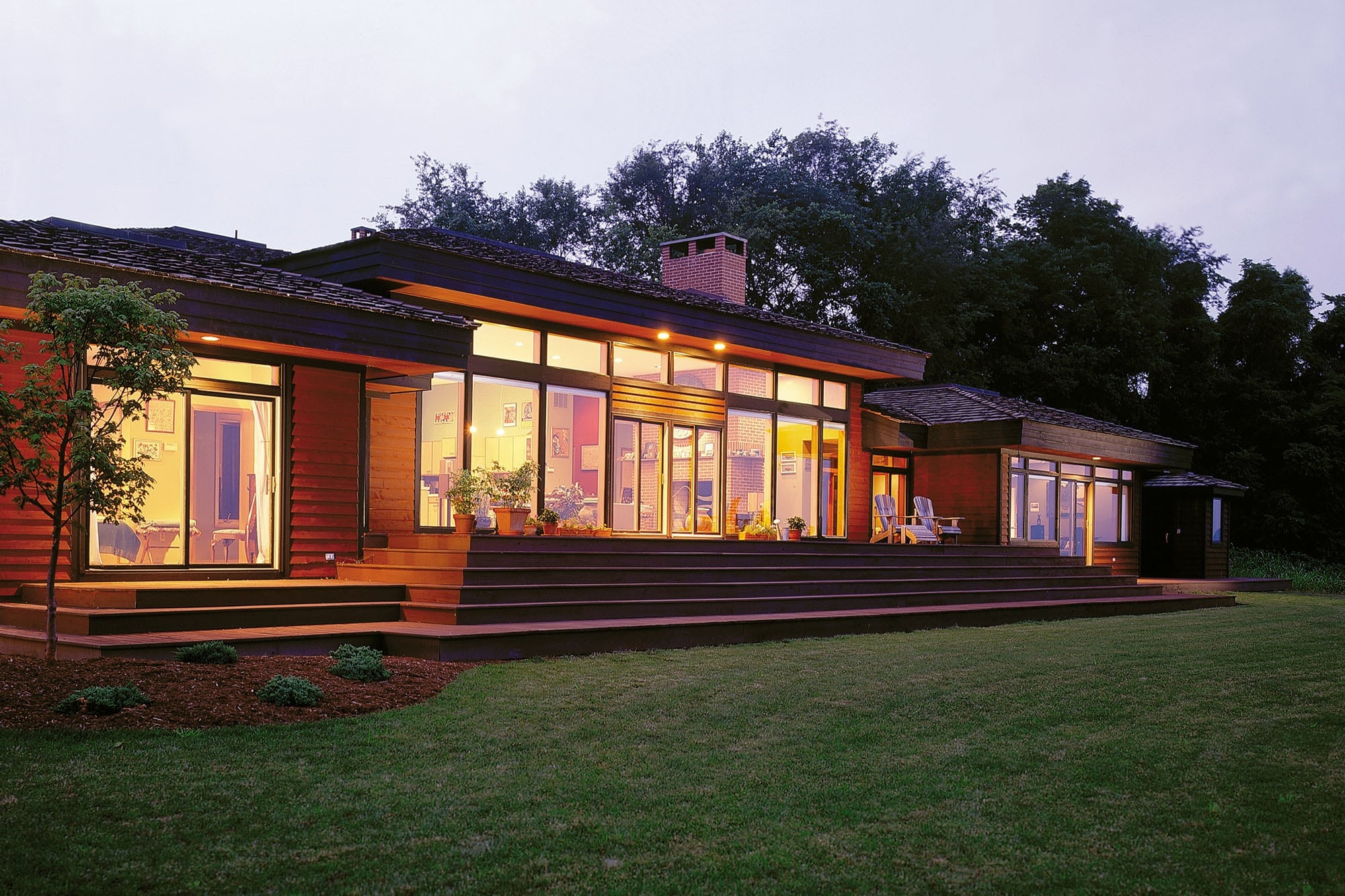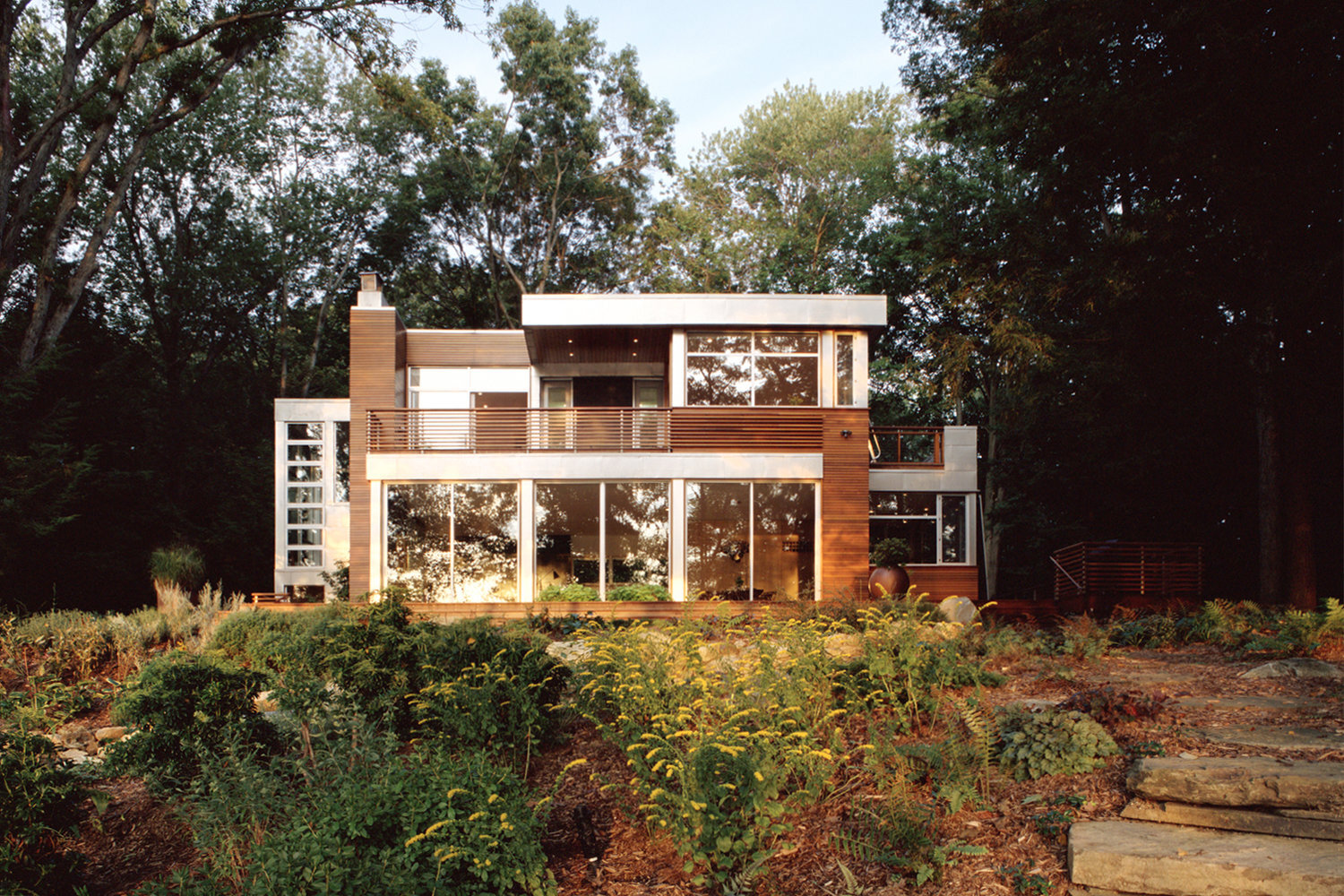Guide to Building Prefab and Modular Homes in the Greater Chicago Area

Our guide to building prefab and modular homes in the Chicago Metro area is designed to be a resource that can help you better understand the prefab home build process in Eastern Illinois. We understand that undertaking a prefab home build can be a daunting project and raise questions ranging from, “Where can I build a prefab home in Chicago, Illinois?” to “How much will it cost to build a prefab home in Chicago?” As such our guide addresses the most important topics you should consider when deciding whether or not a prefab home is right for your situation. Our guide to building prefab and Modular homes in Chicago also includes other cities in the area such as Evanston, Kenilworth, Wilmette, Winnetka, Glencoe, Glenview, Golf, Hinsdale, Western Springs, and River Forest. Continue reading below to better understand the prefab and modular home building process in Chicago or connect with one of our Prefab Concierge experts for project-specific advice here.
Why Might You Want to Build a Prefab Home in the Greater Chicago Area
Quick Build Times - prefab and modular homes are manufactured off-site and assembled at the final build site which allows for multiple steps of the project to be completed simultaneously and more efficiently than a traditional home build. This often results in shorter build times than traditional, site-built homes.
Cost Controlled - using a highly controlled build process (homes are manufactured in climate-controlled production and cutting facilities), unforeseen cost overruns can be better managed leading to reduced overall cost. This is especially necessary for high cost areas of the Chicago Metro Area such as North Shore Towns such as Evanston, Kenilworth, Wilmette, Winnetka, Glencoe, Glenview, Golf, and western suburbs like Hinsdale, Western Springs, and River Forest.
Sustainable & Modern - many of the prefab and modular home manufacturers that serve Chicago and the surrounding areas offer energy efficient, and in some cases, net-zero homes. Many of these manufacturers also offer modern designs, and high-tech elements and appliances.
Durable - manufacturers that serve Illinois offer products that are manufactured with consideration of the natural hazards of the area such as cold weather and heavy snowfall
Key Decisions to Make:
Home Location - while the initial cost to build a prefab home may be rather high in areas like the North Shore communities of Evanston, Kenilworth, Wilmette, Winnetka, Glencoe, Glenview, and Golf and western suburbs of Hinsdale, Western Springs, and River Forest, a newly-built prefab home in these areas can be a sound long-term investment. Alternatively, in some areas with cheaper land costs but relatively high home costs, a prefab home can also be a sound investment. When considering where exactly to build your home, you should be mindful of a few things that could affect your project:
Slope of lot - steep hills can make it difficult to build most pre-designed prefabs, and may require a custom designed and engineered home
Set back requirements which can limit the buildable area of your property
Floor area ratio or other zoning protocols that may affect the possible size of the home
Whether or not your city requires a design review
Custom vs. Standard - While most builders offer a set of pre-designed floor plans, while some also offer options for partial or total home customization. Other builders may specialize in custom prefab home designs. If you live on a tricky lot (uneven terrain, small-lot size, etc.) you may face a limited offering of standard home designs that are suitable for your home build
Modular vs. Kit Home v.s. Panelized - While all three of these construction techniques qualify as prefab home building techniques, there are nuances that you should know when building your own prefab house. These prefab home styles include:
Modular - homes are made up of multiple box-like modules. These modules are fully manufactured and assembled off-site and consist of floors, walls, ceilings, wiring, plumbing, and internal fixtures. After being assembled in an off-site facility, they are shipped to your desired location and the modules are connected and fastened to the foundation. Modular construction is one of the most affordable and quickest prefab building techniques due to the high degree of work completed off-site.
Kit Home - all materials and components necessary for building a home are pre-measured, cut, and delivered to the build site. In some cases, an owner builder can assemble the kit home themselves as a cost-saving method.
Panelized - the home’s structural components: walls, floor, ceiling, are manufactured separate from one another in an off-site location. From there they are shipped and constructed at the final site like a traditional build. While somewhat similar to modular construction, panelized building offers more flexibility in the home build process.
Some builders advertise using Structural Insulated Panels (SIPs) which are a 2-in-1 combination of high-efficiency insulation and structural panels. This allows for the creation of a quick, energy-efficient prefab home.
Architect/manufacturer vs. All-in Company - There are many steps in the prefab home build process. Major steps include land acquisition, home design, manufacturing, and assembly. When selecting a company for your prefab home, you should also pay attention to the services your company offers. In some cases the company you choose may only offer a home design and therefore sub-contract out the manufacturing process, though this is not as common as homes that offer both home design and manufacturing. This type of company however, still leaves you responsible for acquiring land and later finding a local builder to complete necessary site work and finish your home at the project site. It is worth noting that there are several companies that offer all-in-one services and can assist you in all stages of the home-build process including design, manufacturing, site work, and finishing your home.
Financing your home - unless you are planning to pay for your home in cash, you are likely going to need outside financing for your prefab home. The two most common ways of financing a prefab home build are:
construction loan - a short term loan that you can refinance once construction is complete
temp to perm loan - a construction loan for the duration of construction that converts to a normal mortgage once your house is finished. The advantage of these loans is you only have one mortgage close vs. two with just a construction loan.
These methods usually allow you to finance both the land purchase and the construction of your home however, the underwriting and approval process on these loans can be lengthy (60+ days) as the bank is not only underwriting you as a borrower, but also the viability of your building plans. To get land quicker, buyers will often pay cash for their building lot and then the lender will credit the land purchase as a down payment percentage on the purchase.
Some of the best lenders for these products only operate regionally. Therefore, if you would like assistance specific to your situation, we can provide recommendations here.
If you’re looking to purchase an ADU (accessory dwelling unit) or tiny home, then you may want to consider a personal loan:
Many personal lenders allow you to borrow up to $100k with no down payment
These loans are typically amortized over a shorter period than mortgages (up to 12 years)
These loans typically don’t underwrite the property and instead underwrite you as a borrower
Many of the best personal lenders are online and serve almost the entire country
The time to get approved for a personal loan is generally pretty fast (as little as a day to up to a couple weeks)
Common Questions
How much will it cost to build a prefab house in Chicago or surrounding areas like the North Shore or the western suburbs?
While certain variables such as location, builder, and floor plan will affect the total cost of building your home, it is our experience that the final cost of your prefab will range between $180 - $500+ (as of June, 2020).
Is a prefab home a good investment?
Yes, in areas where the total cost of building your prefab home (land cost + building costs) is less than the average dollar per square foot sales price of homes in your neighborhood i.e. you are able to sell your home for more than it cost to build it. In the Chicago area that includes areas where the average price per square foot is $315 per sq ft or higher. This includes multiple neighborhoods of Chicago such as Evanston, Kenilworth, Wilmette, Winnetka, Glencoe, Glenview, Golf, Hinsdale, Western Springs, and River Forest. It is important to note that the hardest part of a project in these areas is finding buildable land or even lots suitable for teardown that will work within the price range and time frame of your project.
Can I finance a prefab home in the Chicago Metro Area?
Yes. The most common way to finance a prefab home is a temp to perm loan. This financing method starts out as a loan for the construction of your home and converts to a mortgage once your home is completed. Another financing option is a construction loan which is a short-term loan that you then refinance once the construction process is finished.
What do the economics of an investment in a prefab home look like?
Our spreadsheet (below) is an example of what the costs and potential benefits of a prefab home investment might look like. While there may be high up-front costs, it is likely there will be a sizable return on your investment. In high-demand areas of Chicago, one of the most challenging parts of the build process is finding a buildable lot at a reasonable price. In some cases it might be cheaper to buy and tear-down an existing home rather than purchase a vacant, build-ready lot.
| Item | Unit | Wilmette, Illinois | Western Springs, Illinois | Evanston, Illinois | Naperville, Illinois | Notes |
|---|---|---|---|---|---|---|
| Cost To Build | ||||||
| Cost of lot including closing costs & buyers agent | $ | 300,000 | 250,000 | 200,000 | 115,000 | |
| Cost of prefab home + construction | $ | 1,062,500 | 1,125,000 | 550,000 | 875,000 | |
| Loan Rate | 4.00% | 4.00% | 4.00% | 4.00% | ||
| Loan | $ | 65,400 | 66,000 | 36,000 | 47,520 | 4% APR (interest only), 18 months project time, 20% down |
| Value of tax deduction | $ | -22,890 | -23,100 | -12,600 | -16,632 | Assumes income to deduct and 35% marginal tax rate |
| Total cost to build | $ | 1,405,010 | 1,417,900 | 773,400 | 1,020,888 | |
| ARV (after repair value) | This is the term for post-construction value | |||||
| $ per sqft comps for new construction | $ | 360 | 425 | 315 | 325 | |
| Size of new home | Sqft | 4,250 | 3,750 | 2,750 | 3,500 | |
| Cost to buy similar home | $ | 1,530,000 | 1,593,750 | 866,250 | 1,137,500 | |
| Return On A Flip | ||||||
| Sale price | $ | 1,530,000 | 1,593,750 | 866,250 | 1,137,500 | |
| Cost to Build | $ | $1,405,010 | $1,417,900 | $773,400 | $1,020,888 | |
| Broker Fees | $ | $91,800 | $95,625 | $51,975 | $68,250 | 6% |
| Closing costs | $ | $30,600 | $31,875 | $17,325 | $22,750 | 2% |
| Profit before taxes | $ | 2,590 | 48,350 | 23,550 | 25,612 | |
| PLEASE NOTE: THESE MODELS ARE NOT GUARANTEES AND SHOULD NOT BE CONSIDERED FINANCIAL ADVICE. THEY ARE FOR EDUCATIONAL PURPOSES ONLY AND PURELY ILLUSTRATIVE EXAMPLES OF POTENTIAL BUYING SCENARIOS. BUYERS SHOULD DO THEIR OWN DILIGENCE BEFORE MAKING ANY PURCHASE. | ||||||
How long will it take?
The answer to this question depends a lot on your particular location. Your city’s permitting and building process will play a large role in determining the time frame for your build. Total, the build process can take between 1-2 years and maybe longer if there is a design review process.
Planning Departments in and around the Chicago Area:
Reputable Companies that Serve Chicago and the Surrounding Areas:
Minnesota-based prefab home designer of
All-in-cost: $250 - $490 per sqft
Design and manufacture modern, Scandanavian-inspired prefab home kits
All-in-cost: $215 - $445 per sqft
Design and manufacture modern, energy-efficient home kits with regional offices throughout the U.S.
All-in-cost: $225 - $350 per sqft
Offer both standard and custom timber frame home kits
All-in-cost: $300 per sqft - $350 per sqft




